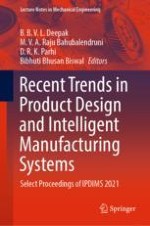This book presents select proceedings of the 3rd Innovative Product Design and Intelligent Manufacturing System (IPDIMS 2020), held at National Institute of Technology (NIT) Rourkela, 30–31 December 2021. This volume covers the latest research topics in design and manufacturing fields of engineering. Some of the themes covered include Industry 4.0, smart manufacturing, advanced robotics and CAD/CAM/CIM. This book will be useful for students, researchers and professionals in the disciplines of mechatronics, mechanical, manufacturing, production and industrial engineering, especially those working on improvements in manufacturing technologies and development of resilient infrastructure in industry.
